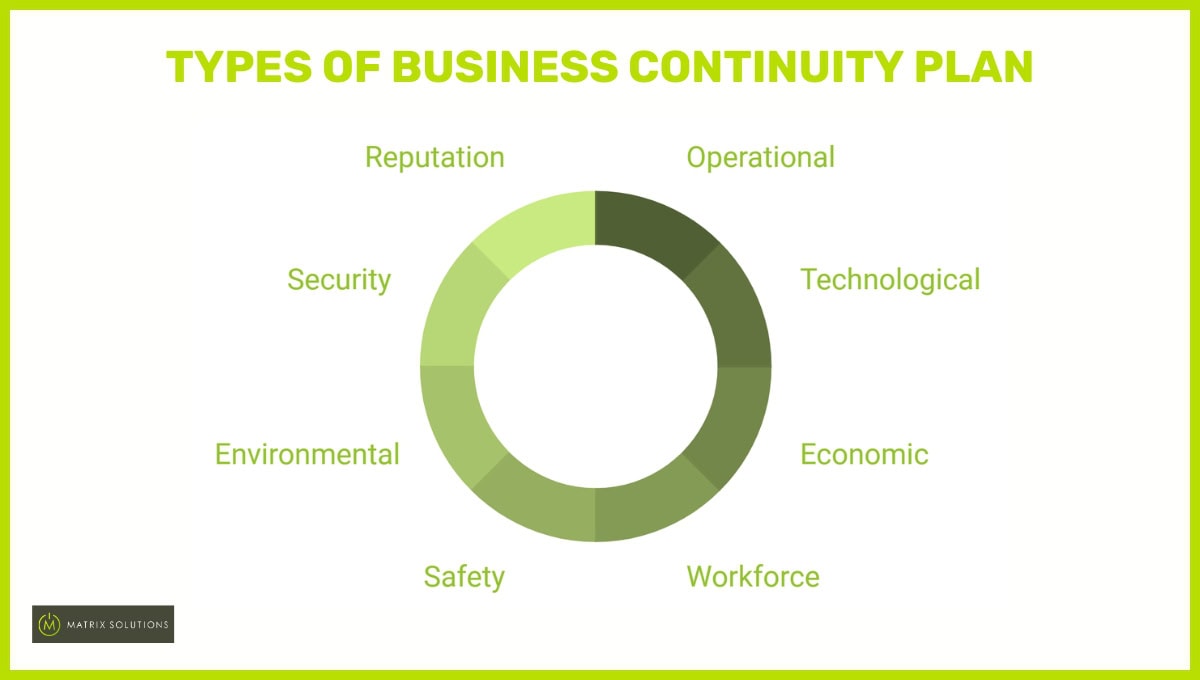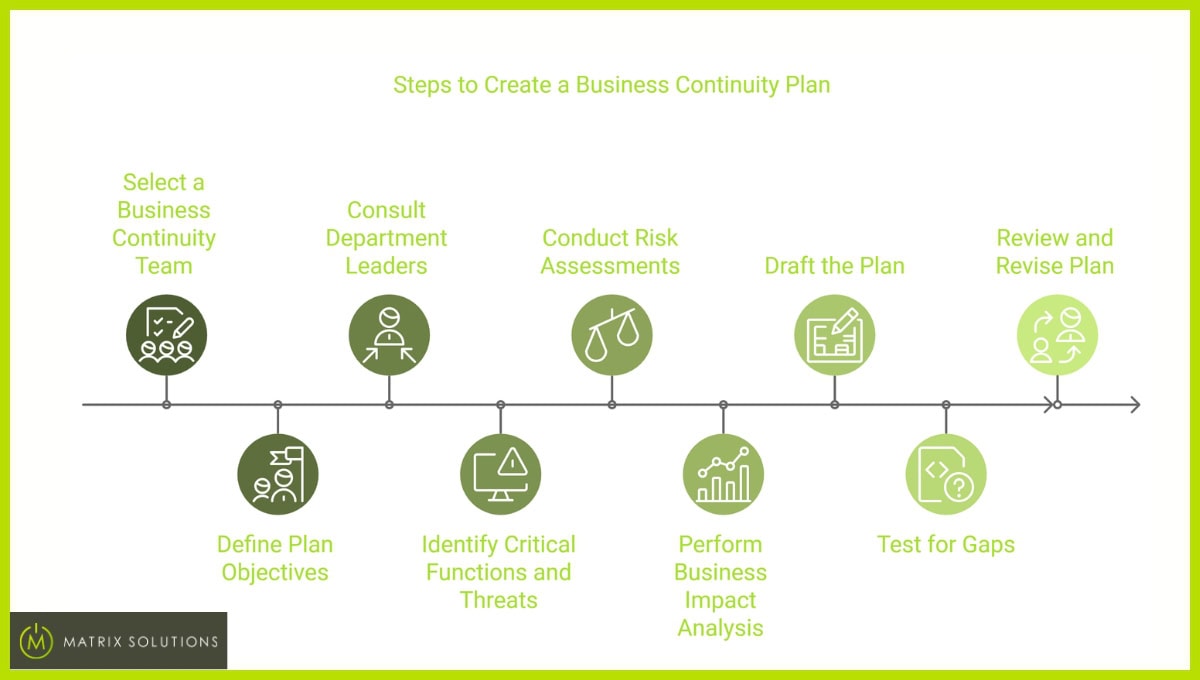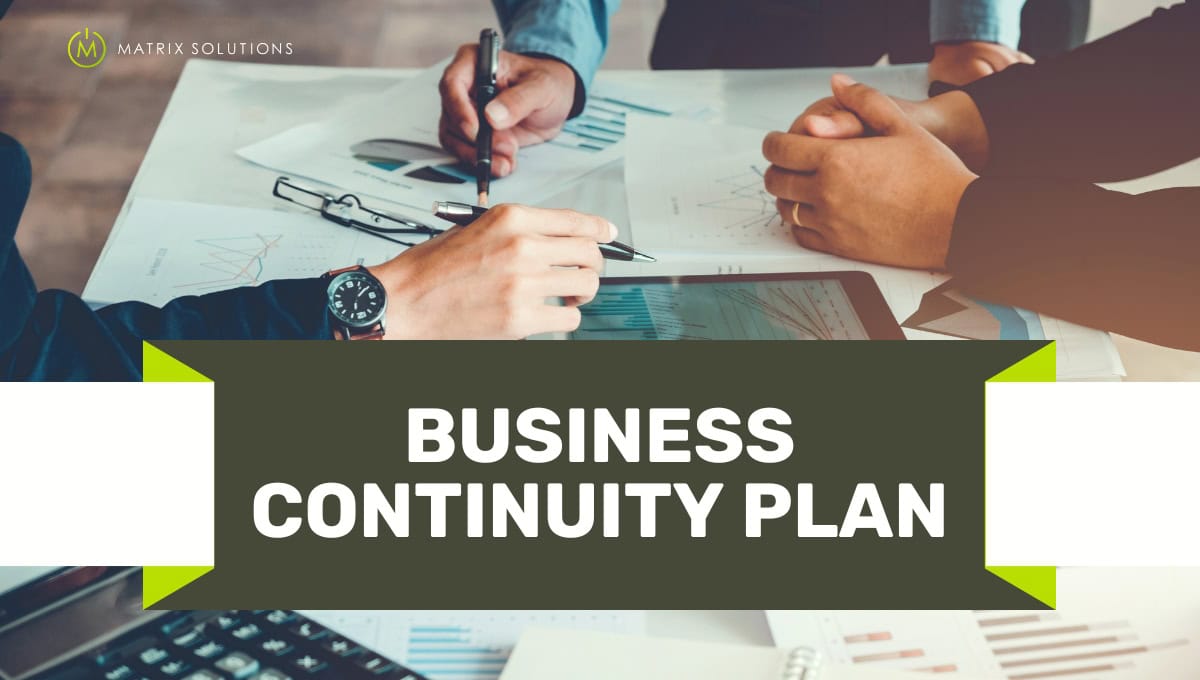Disruptions can strike any business at any time, whether it’s a sudden natural disaster, a cyber-attack or a financial crisis. As much as we hope for the best, it’s critical to be prepared for the worst. A Business Continuity Plan (BCP) equips you to keep things running smoothly during challenging times, limiting both operational and financial damage. In this blog, we’ll show you how to create a plan tailored to your business, helping you remain prepared for whatever comes next.
Let’s start by learning what a BCP is and why it is important!
What is a Business Continuity Plan?
A Business Continuity Plan (BCP) is a strategic document that outlines how a business will continue to operate during and after an unforeseen disruption. It focuses on keeping essential functions going, ensuring minimal downtime and providing a roadmap for recovery.
Why is it important?
BCP is essential because regular operations must continue even in the face of a crisis—sometimes even more so during one. In fact, 89% of business leaders place resilience at the top of their strategic priorities.
Here’s why having a BCP is crucial for your business:
- Maintaining Operations: Ensures that essential business functions can continue despite disruptions, minimising downtime.
- Employee Well-being: Protects your workforce by outlining procedures for safety, remote work and support during crises.
- Swift Recovery: Facilitates a quicker recovery process by having structured steps in place to restore operations.
- Client Expectations: Helps maintain trust by ensuring customers and stakeholders experience minimal disruptions.
- Crisis Communication: Provides a solid communication plan for transparent and effective messaging during emergencies.
- Regulatory Compliance: Ensures your business meets legal and industry requirements, reducing the risk of fines or penalties.
- Profitability: Minimises financial loss by keeping key functions operational and reducing the cost of recovery efforts.
Types of Business Continuity Plans
Different aspects of a business face unique challenges during disruptions, and a robust business plan addresses various areas. Here are the key types of plans businesses need to consider:

Operational
Operational continuity ensures that core business functions like production, supply chain and customer service remain unaffected. This aspect of the plan focuses on logistical and functional processes to minimise interruptions in day-to-day activities.
Technological
Technological continuity is especially important for businesses heavily reliant on IT infrastructure. This includes data disaster recovery, maintaining access to digital tools, and ensuring network security in the event of a cyber-attack or system failure.
Economic
Economic continuity planning helps businesses mitigate financial risks associated with disruptions. It involves strategies for maintaining cash flow, securing lines of credit or identifying cost-cutting measures that won’t compromise operations.
Workforce
A workforce continuity plan outlines steps to ensure employee safety and productivity during a crisis. It includes remote working policies, communication strategies and mental health support for employees under stressful conditions.
Safety
Safety continuity addresses the measures necessary to protect employees and customers during emergencies. It includes evacuation procedures, access to medical resources and compliance with safety regulations.
Environmental
Environmental risks such as floods, earthquakes or fires can severely disrupt business operations. Continuity planning involves safeguarding assets and ensuring that environmental threats are adequately mitigated.
Security
Security continuity focuses on protecting both physical and digital assets. It includes measures to prevent unauthorised access, manage security breaches and safeguard intellectual property and customer data.
Reputation
A disruption can severely impact a business’s reputation, particularly if customers or stakeholders are affected. Reputation management within a BCP involves communication strategies, public relations plans, and transparent updates to maintain trust.
How to Write a Business Continuity Plan
Developing an effective plan requires careful consideration of your business’s unique needs and risks. Below are the steps to create a comprehensive plan:

1. Select a Business Continuity Team
Before you begin formulating your BCP, it’s critical to establish a cross-functional team responsible for its development, execution and maintenance. This team should consist of key personnel such as department heads, IT experts and stakeholders who understand both the operational and technical sides of the business. Their collective knowledge ensures that the continuity strategy covers all vital areas of the organisation.
2. Define Plan Objectives
The next step is to clarify the objectives of your continuity plan. What are you aiming to achieve? Are you focused on ensuring uninterrupted operations, safeguarding sensitive data, or maintaining employee safety? Establishing clear objectives at the outset and giving the plan direction and purpose allows you to focus on what matters most for the continuity of your business.
3. Consult Department Leaders
For a well-rounded approach, it’s essential to collaborate with department heads and key team members across the business. Each department has its own set of critical functions, and understanding these allows you to pinpoint where the greatest vulnerabilities lie. By consulting these leaders, you’ll gain valuable insights into what each part of the business needs to maintain continuity during a crisis.
4. Identify Critical Functions and Threats
Once you’ve gathered input from each department, it’s time to identify the core functions that are essential for your business’s survival. What processes must remain operational, and what threats could put them at risk? These could range from natural disasters to different types of cyber-attacks or even economic downturns. By focusing on your most vital operations, you ensure that your continuity plan addresses the most critical aspects of your business.
5. Conduct Risk Assessments
Once the critical functions and threats have been identified, conduct detailed risk assessments to evaluate likelihood of each threat occurring and the potential impact on your business. These assessments are key in determining where to focus your resources and ensuring that the most pressing risks are addressed within your business continuity strategy.
6. Perform Business Impact Analysis
A Business Impact Analysis (BIA) is an essential part of your continuity planning. It helps quantify the potential effects of various disruptions on your business, from financial losses to operational downtime. Understanding these impacts enables you to develop stronger mitigation strategies and ensures that your continuity plan is equipped to handle different types of crises.
7. Draft the Plan
With all the information gathered through your risk assessments and BIA, it’s time to draft the Business Continuity Plan itself. This document should outline specific steps for maintaining operations during a disruption, including communication procedures, recovery timelines, and clearly defined roles and responsibilities. A well-drafted BCP ensures that everyone knows what to do when a crisis strikes.
8. Test for Gaps
A plan is only as good as its ability to perform under pressure. Regularly testing your continuity plan through drills and simulations is essential for identifying weaknesses or gaps in your strategy. These exercises provide invaluable feedback, allowing you to make necessary adjustments and improvements before a real disruption occurs.
9. Review and Revise Plan
Your continuity strategy should be treated as a living document. As your business evolves, so do the risks and challenges you may face. It’s important to review and revise the plan regularly to ensure it remains relevant and effective in addressing both current and future threats.
Business Continuity Plan vs Disaster Recovery Plan
While both business continuity plans and disaster recovery plans aim to minimise the impact of disruptions, they have distinct roles. A BCP is a comprehensive strategy that ensures that all essential business functions. In contrast, a DRP is narrowly focused on restoring IT systems and data after a disaster. Simply put, a BCP is designed to keep the business running, while a DRP ensures that technical systems are swiftly recovered to normal operations.
Here, are the significant differences between BCP and DRP:
| Aspect | Business Continuity Plan (BCP) | Disaster Recovery Plan (DRP) |
|---|---|---|
| Purpose | Ensures continuous business operations during and after a disruption. | Focuses on restoring IT systems and data after a disaster. |
| Scope | Covers all business functions, including personnel, facilities, and processes. | Primarily focused on the IT infrastructure and data recovery. |
| Focus | Maintaining overall business operations and client communication. | Restoring technical systems, servers, and data to normal. |
| Time Frame | Plans for both short-term and long-term disruptions. | Focuses on short-term recovery after an IT failure or cyber incident. |
| Responsibility | Involves multiple departments, including operations, HR, and management. | Primarily managed by the IT department or external IT vendors. |
How Often Should a Business Continuity Plan be Reviewed?
A Business Continuity Plan should be reviewed at least annually or whenever significant operational, technological or personnel changes occur within the business. Additionally, after any major disruption or drill, it’s important to revisit the plan to incorporate lessons learned and refine strategies.
How Matrix Solutions Helps in Developing a Business Continuity Plan
Matrix Solutions specialises in creating tailored business continuity plans designed to safeguard businesses across the legal, financial, insurance and real estate sectors. With over 27 years of industry experience, we understand the unique risks faced by SMEs and offer comprehensive solutions that address operational, technological and workforce continuity. Our expert team works closely with your organisation to identify critical functions, assess risks, and develop a BCP that ensures your business can weather any storm. From managed cybersecurity to managed cloud services, we provide the tools and support needed to keep your business running smoothly—no matter what challenges arise.











